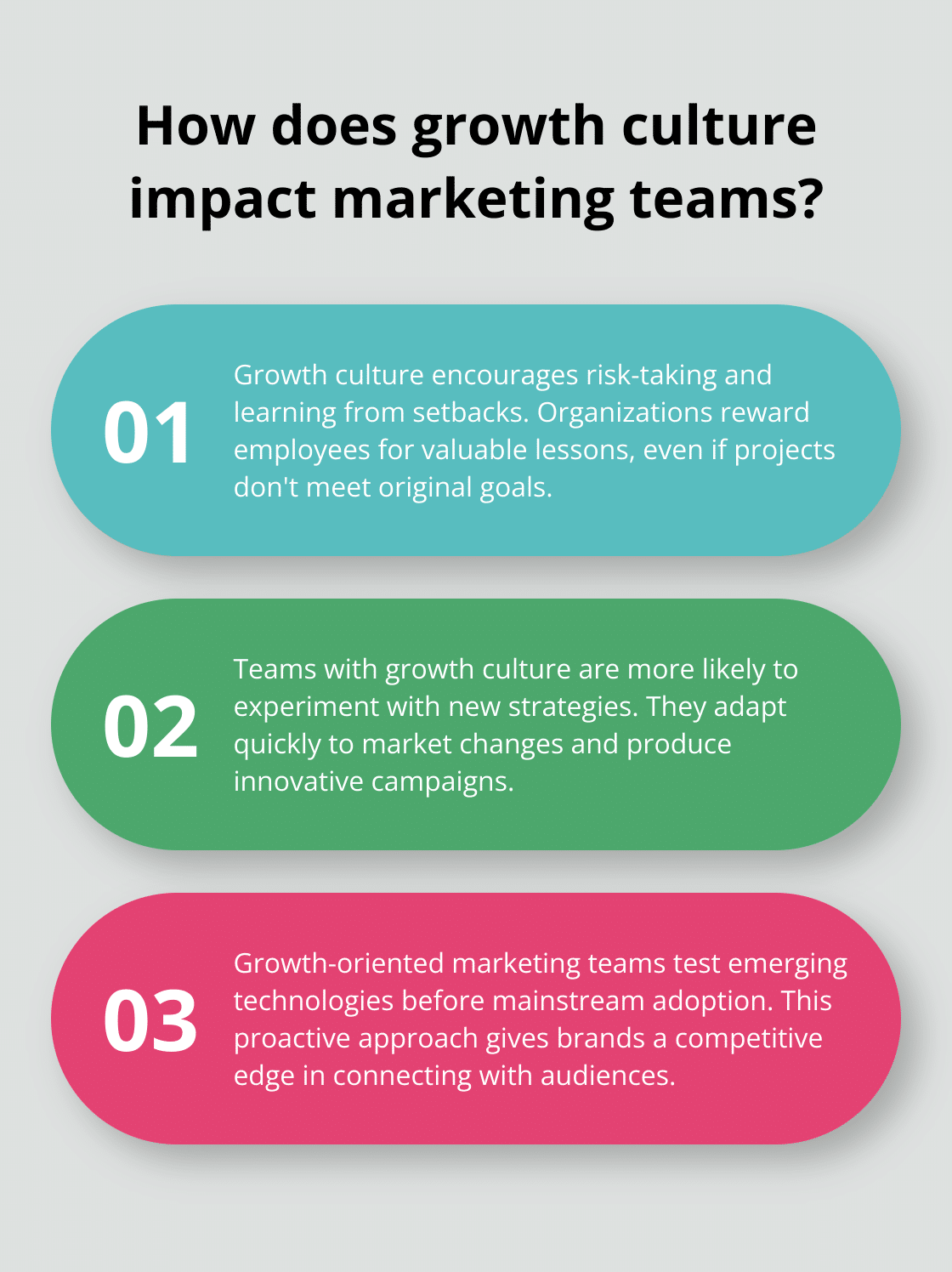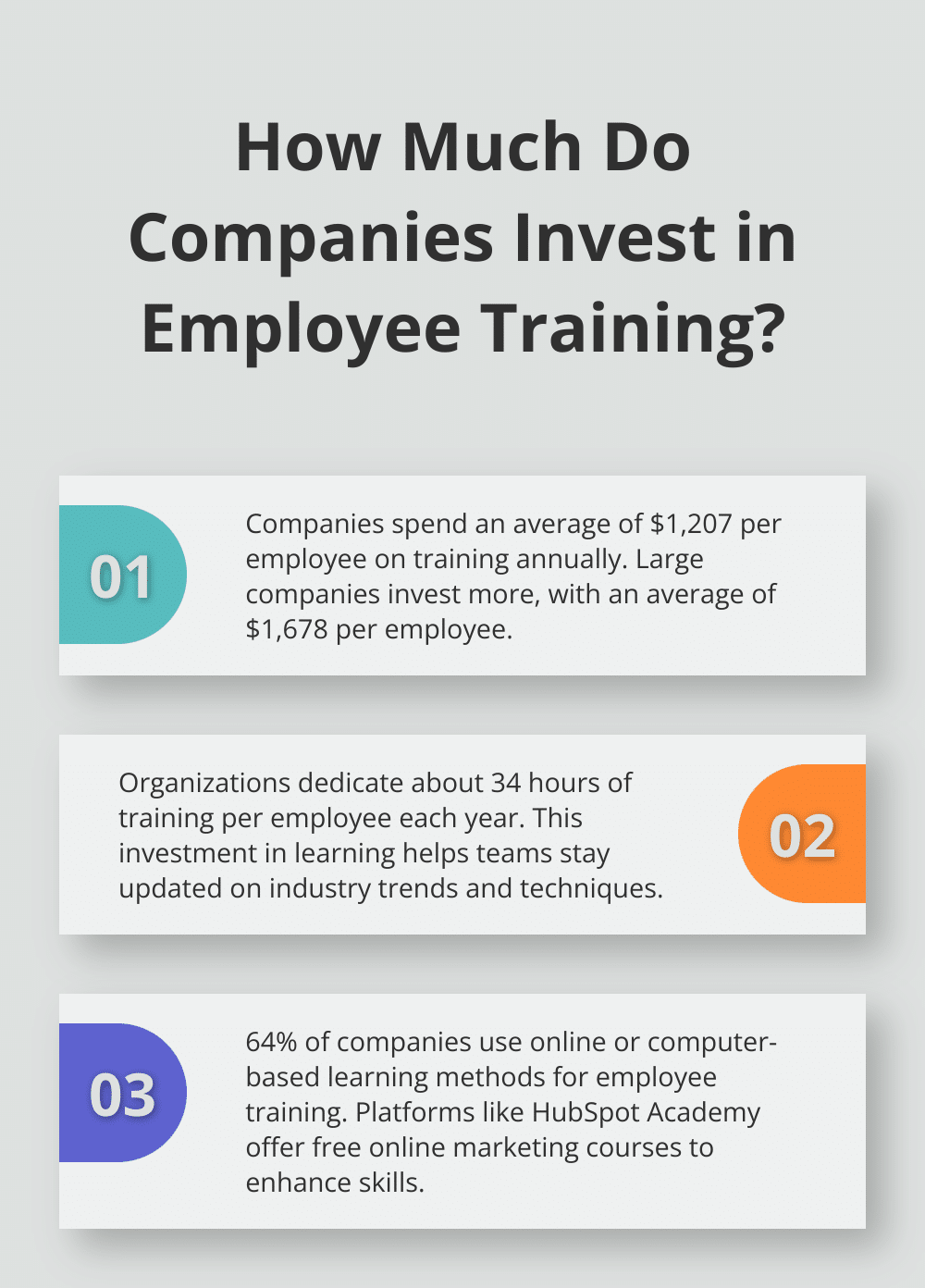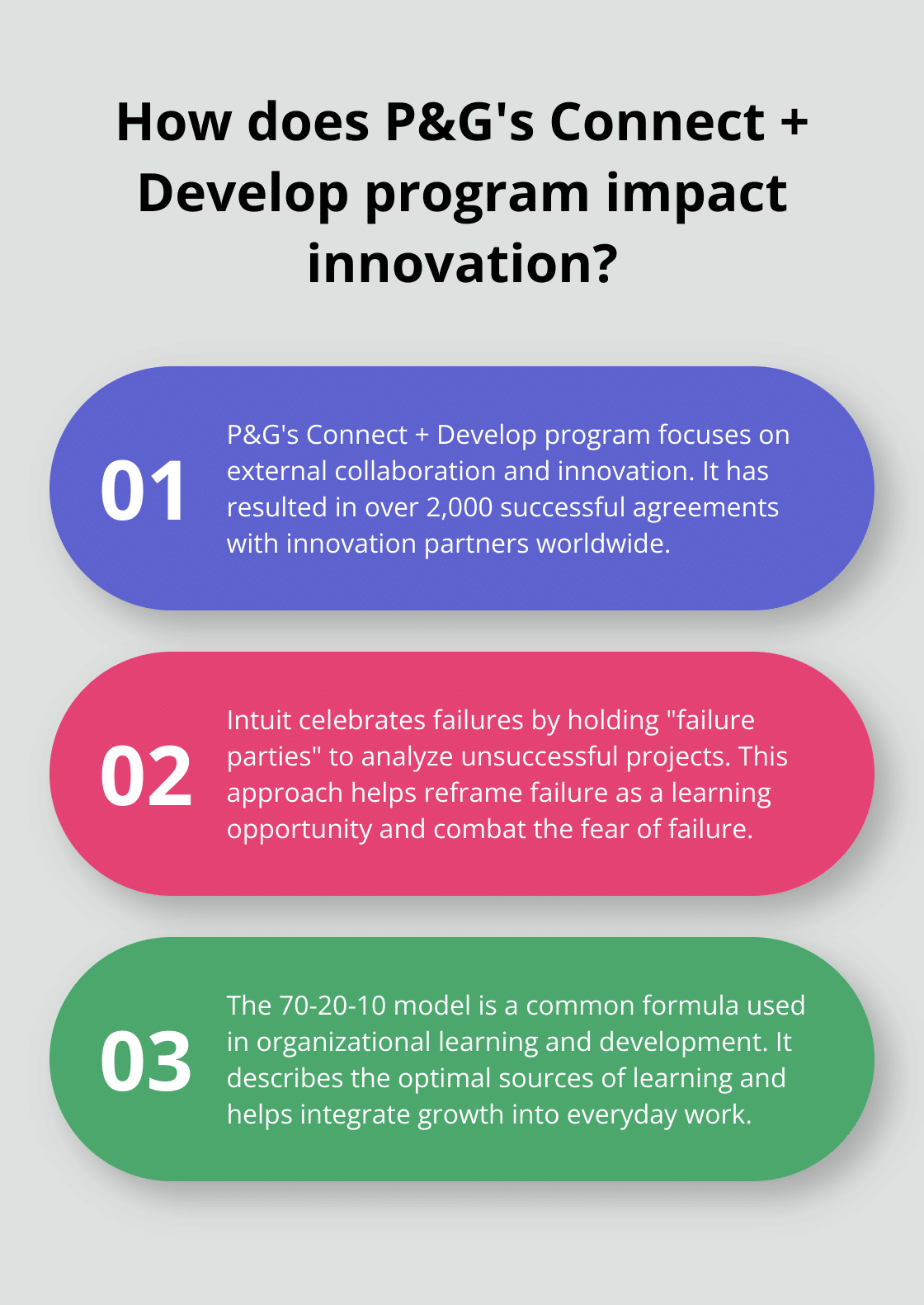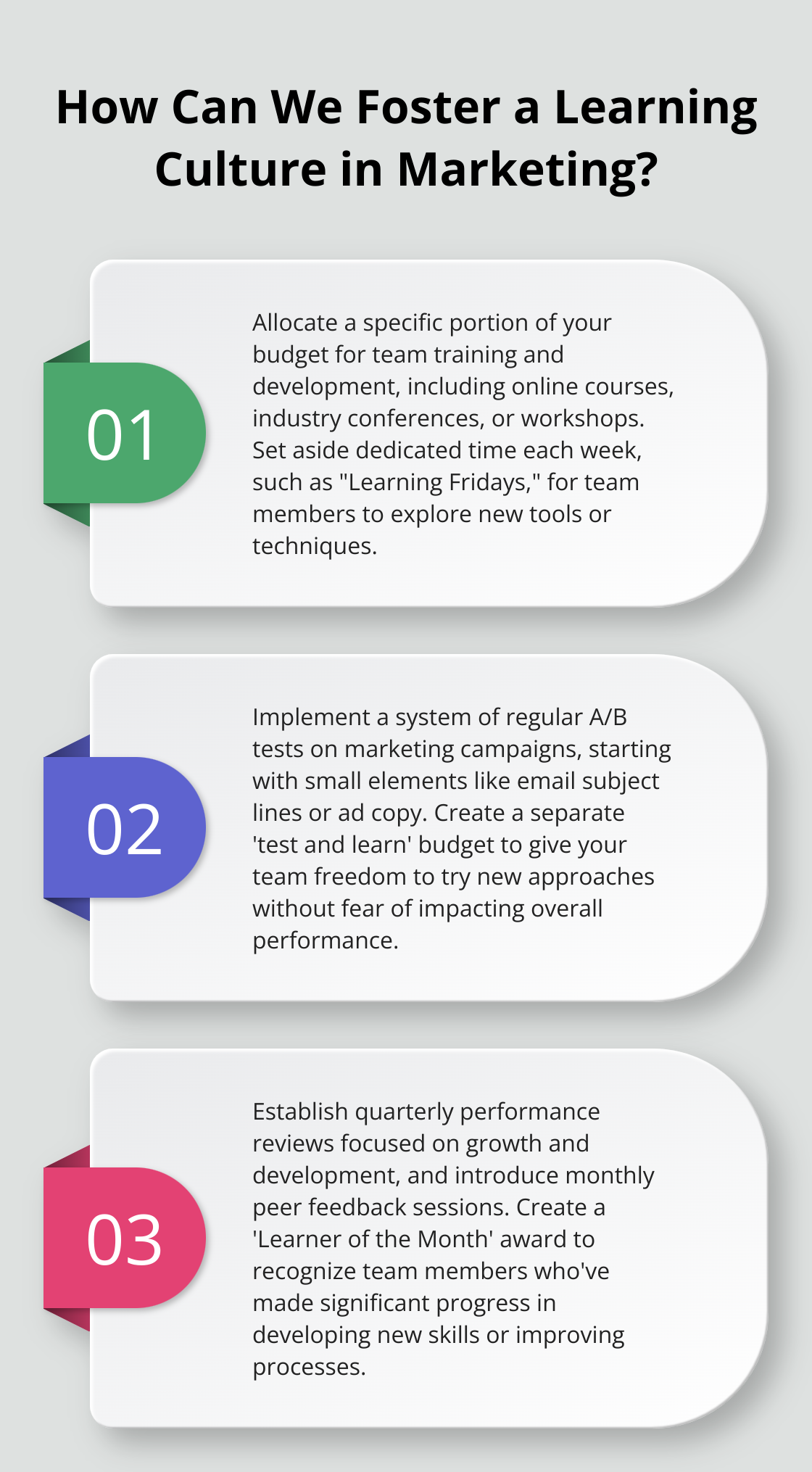In today’s fast-paced marketing landscape, fostering a growth mindset is essential for teams to thrive. At Made Simpler, we’ve seen firsthand how a culture of continuous improvement can transform marketing departments.
This blog post explores practical strategies for cultivating a growth-oriented environment within your marketing team. We’ll dive into the benefits, challenges, and actionable steps you can take to boost innovation and performance.
Why Growth Culture Matters in Marketing
Defining Growth Culture in Marketing
A growth culture in marketing creates an environment where team members actively seek improvement, embrace challenges, and view setbacks as learning opportunities. This approach values progress over perfection and encourages calculated risks. It’s not just about acquiring new skills-it’s about developing a mindset that’s always ready to adapt and innovate.
The Tangible Benefits of a Growth Mindset
Adopting a growth mindset encourages appropriate risk-taking, knowing that some risks won’t work out. Organizations that embody this mindset reward employees for important and useful lessons learned, even if a project does not meet its original goals. These practices translate into real-world benefits. Marketing teams with a growth culture are more likely to experiment with new strategies, adapt quickly to market changes, and produce innovative campaigns that resonate with audiences.
Boosting Innovation and Performance
The impact of a growth culture on innovation and performance is significant. Teams that embrace this mindset are more likely to:
- Experiment with emerging technologies and platforms
- Develop creative solutions to complex marketing challenges
- Adapt quickly to changes in consumer behavior

For example, a marketing team with a growth culture might test AI-driven content creation tools or explore new social media platforms before they become mainstream. This proactive approach can give your brand a competitive edge and help you connect with audiences in fresh, engaging ways.
Practical Steps to Foster Growth Culture
Implementing a growth culture doesn’t require grand gestures-it’s about consistent, small actions that add up over time. Here are some practical steps you can take:
- Organize regular skill-sharing sessions where team members teach each other new techniques or tools
- Allocate time for experimentation and ‘failed’ projects (viewing them as learning opportunities rather than wasted resources)
- Celebrate team members who take calculated risks, regardless of the outcome
Cultivating a growth culture is an ongoing process. It requires commitment from leadership and buy-in from every team member. The rewards-increased innovation, improved performance, and a more engaged team-make it well worth the effort.
The Role of Leadership in Growth Culture
Leaders play a pivotal role in establishing and maintaining a growth culture. They must model the behaviors they want to see in their team. This includes:
- Admitting mistakes and sharing lessons learned
- Seeking feedback and acting on it
- Investing in personal and professional development
When leaders embody these principles, they create a safe environment for their team to take risks and push boundaries. Data-driven leaders should tailor the level of detail in reports, avoiding overwhelming team members with raw data. Instead, they should create reports with clear visualizations and focus on key metrics. This sets the stage for the next crucial aspect of cultivating a growth culture: developing specific strategies to embed this mindset into your team’s daily operations.
How to Build a Growth-Driven Marketing Team
Invest in Continuous Learning
Allocate a portion of your budget for team training and development. This could include online courses, industry conferences, or workshops. For example, HubSpot Academy offers free online marketing courses that can keep your team updated on the latest trends and techniques.

Set aside time each week for learning. Many successful marketing teams dedicate specific hours (e.g., “Learning Fridays”) where team members explore new tools or techniques. This practice often leads to the discovery of innovative AI tools that can significantly improve content creation processes.
Embrace Data-Driven Experimentation
Encourage your team to run regular A/B tests on marketing campaigns. Start small – test email subject lines, ad copy, or landing page designs. Use tools like Google Optimize for website experiments or Mailchimp for email marketing tests.
Create a ‘test and learn’ budget. This gives your team the freedom to try new approaches without the fear of failure impacting overall performance.
Implement Effective Feedback Loops
Establish a system for regular performance reviews. We recommend quarterly check-ins focused on growth and development, rather than just performance metrics. Use these sessions to set personal development goals aligned with team objectives.
Introduce peer feedback sessions. Many successful marketing teams run monthly ‘feedback circles’ where team members provide constructive feedback to each other. This practice improves collaboration and helps identify areas for individual and team growth.
Reward Growth-Oriented Behaviors
Recognize and celebrate learning, not just results. Create a ‘Learner of the Month’ award for team members who’ve made significant progress in developing new skills or have applied new knowledge to improve processes.
Tie bonuses or promotions to skill development and innovation. For example, consider factors like the number of new techniques implemented or improvements suggested when evaluating team members for advancement.
Foster a Culture of Experimentation
Encourage your team to take calculated risks. Create a safe environment where failure is seen as a learning opportunity rather than a setback. This approach will empower your team to push boundaries and discover innovative marketing strategies.
Implement a ‘no-blame’ policy for experiments that don’t yield the expected results. Instead, focus on extracting valuable insights from these experiences. This mindset shift will encourage more team members to propose and lead experimental projects.
The journey to build a growth-driven marketing team is ongoing and requires consistent effort. However, the rewards are substantial: a team that’s not just reactive to market changes, but proactively drives innovation and growth. As you implement these strategies, you’ll likely encounter challenges. Let’s explore how to overcome these obstacles in the next section.
Navigating Growth Culture Hurdles
Overcoming Resistance to Change
Change often creates discomfort, even when it brings positive outcomes. To address resistance, communicate the benefits of a growth culture clearly. Share success stories from other companies or departments that have embraced this approach. For example, Procter & Gamble’s Connect + Develop program (which focuses on external collaboration and innovation) has resulted in more than 2,000 successful agreements with innovation partners worldwide.

Involve your team in the process. Create a task force with representatives from different levels to help shape and implement growth initiatives. This ownership can significantly reduce resistance and increase buy-in.
Tackling the Fear of Failure
Fear of failure can paralyze even the most talented marketers. To combat this, reframe failure as a learning opportunity. Implement a ‘Failure of the Month’ award, celebrating the most insightful lesson learned from a misstep. This approach has proven successful at companies like Intuit, where they hold “failure parties” to analyze and learn from unsuccessful projects.
Provide a safety net for experimentation. Allocate a portion of your budget specifically for high-risk, high-reward projects. This gives your team the freedom to take calculated risks without jeopardizing core operations.
Balancing Growth and Daily Tasks
One of the biggest challenges in cultivating a growth culture is finding time for development amidst daily responsibilities. To address this, integrate learning into everyday work. For instance, implement the 70-20-10 model, which is a commonly used formula in organizational learning and development to describe the optimal sources of learning.
Use tools like Trello or Asana to visualize workloads and ensure growth activities receive equal priority to routine tasks. This visual management can help team members and leaders alike see where time is spent and make adjustments as needed.
Aligning with Company Goals
Ensure that your growth initiatives align with broader company objectives. Regular meetings with leadership can help keep your marketing team’s growth culture in sync with organizational goals. For example, if the company aims to expand into new markets, focus your team’s learning and experimentation on understanding and reaching these new audiences.
Create a scorecard that tracks both growth-related metrics (like new skills acquired or experiments run) and traditional KPIs. This balanced approach demonstrates how a growth culture directly contributes to business success.
Final Thoughts
A growth mindset transforms marketing teams into innovative powerhouses. Teams that value continuous learning, embrace calculated risks, and view challenges as opportunities become adaptable and resilient. These qualities enable marketing professionals to navigate industry shifts, leverage emerging technologies, and consistently deliver fresh campaigns.

The journey to cultivate a growth culture requires time and persistence. Leaders must start small, celebrate progress, and encourage open communication. This approach creates an environment where team members feel valued and motivated to contribute their best ideas.
Made Simpler supports teams in their growth journey with AI-enhanced solutions and comprehensive services. We provide the tools and expertise needed to stay ahead in the rapidly evolving digital landscape. Take the first step today: assess your current team culture, identify areas for growth, and implement strategies to foster a growth mindset.

